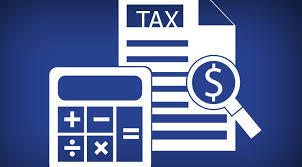
Alternative minimum tax refers to a percentage of taxes a taxpayer must pay the government regardless of the deductions the taxpayer claims. With the AMT, some taxpayers get to pay their fair share of taxes or a minimum, but it doesn't start until the income gets to a certain amount.
The USA has AMT taxpayers must pay if they earn above a particular income threshold. The AMT recalculates the income tax after adding tax preference items into the adjusted gross income.
AMT also applies different regulations in calculating taxable income from when deductions are made. More so, preferential deductions added to the taxpayer's income are made to calculate his alternative minimum taxable income (AMTI). Then the exemption from the AMT is removed to ascertain the closing taxable amount.
AMT exemptions
The AMT exemptions for individual tax filers are at $72,900, and for joint tax filers (married couples), it is at $113,400; these are for the year 2020. But 2021, figures will be $73,600 with $114,600, respectively. Taxpayers must file Form 6251 to know if they owe AMT. Then they will get to remove the exemption amount, and if the AMT is lower than the exemption, they won't pay AMT.
However, it is essential to note that taxpayers having AMTI over a particular threshold are not eligible for AMT exemptions. For the tax year 2020, the termination phase starts at $518,400 and $1,036,800 for individuals and couples who file jointly. What is the purpose of the AMT?
The aims of the AMT
The AMT was set up to dissuade taxpayers from avoiding their share of tax liability caused by tax breaks and the structure did not include inflation or tax cuts which causes a bracket creep. A bracket creep is a situation where the upper and middle-income taxpayers pay this tax instead of the rich taxpayers whom the AMT was made for in the first place. More so, Congress passed the law that indexed AMT exemptions amounted to inflation in 2015.
How to calculate AMT
To ascertain if a taxpayer owes AMT, the individual can utilize tax software that instantly calculates the figures and can fill Form 6251. The form considers medical expenses, interests from the mortgage, and other deductions to help the tax filer know when their deductions are more than the IRS's overall limits.
The form requires information on some forms of income like tax refunds, interest earned from private bonds, investment interests, and other numbers that correlate with gains or losses from a property's disposition.
The IRS also has specified formulas to ascertain the portion of the income and deductions that the taxpayer needs to input in Form 6251. It also uses another formula to ascertain how the numbers get to AMTI.
According to the IRS, the AMT is the excess of the tentative minimum tax in a regular tax, so AMT is owed if the tentative minimum tax or that year is greater than the regular tax for the same year. The tax is computed by:
Taking into account taxable income and eliminating or reducing some exclusions and deductions.
Then subtracting the AMT exemption amount
Multiply the calculated amount in two with the AMT tax rate
Subtract the AMT foreign tax credit.
AMT and tax credit
If a filer is not liable for AMT in a year but paid AMT in previous years, they will be eligible for a particular minimum tax credit against the regular tax for that year. You discover that you qualify, then you must file Form 8801, the Credit for Prior Year Minimum Tax – Individuals, Estates, and Trusts to get the minimum tax credit.
If you are unsure of your status with AMT (if you owe or not), please work closely with a tax preparer or an expert.
FOR MORE INFORMATION OR TO SEE HOW CYPRESS TAX SOLUTIONS CAN BEST HELP YOU WITH YOUR TAX FILING NEEDS, PLEASE CLICK THE BLUE TAB ON THIS PAGE.
THANKS FOR VISITING.
Cypress Tax Solutions